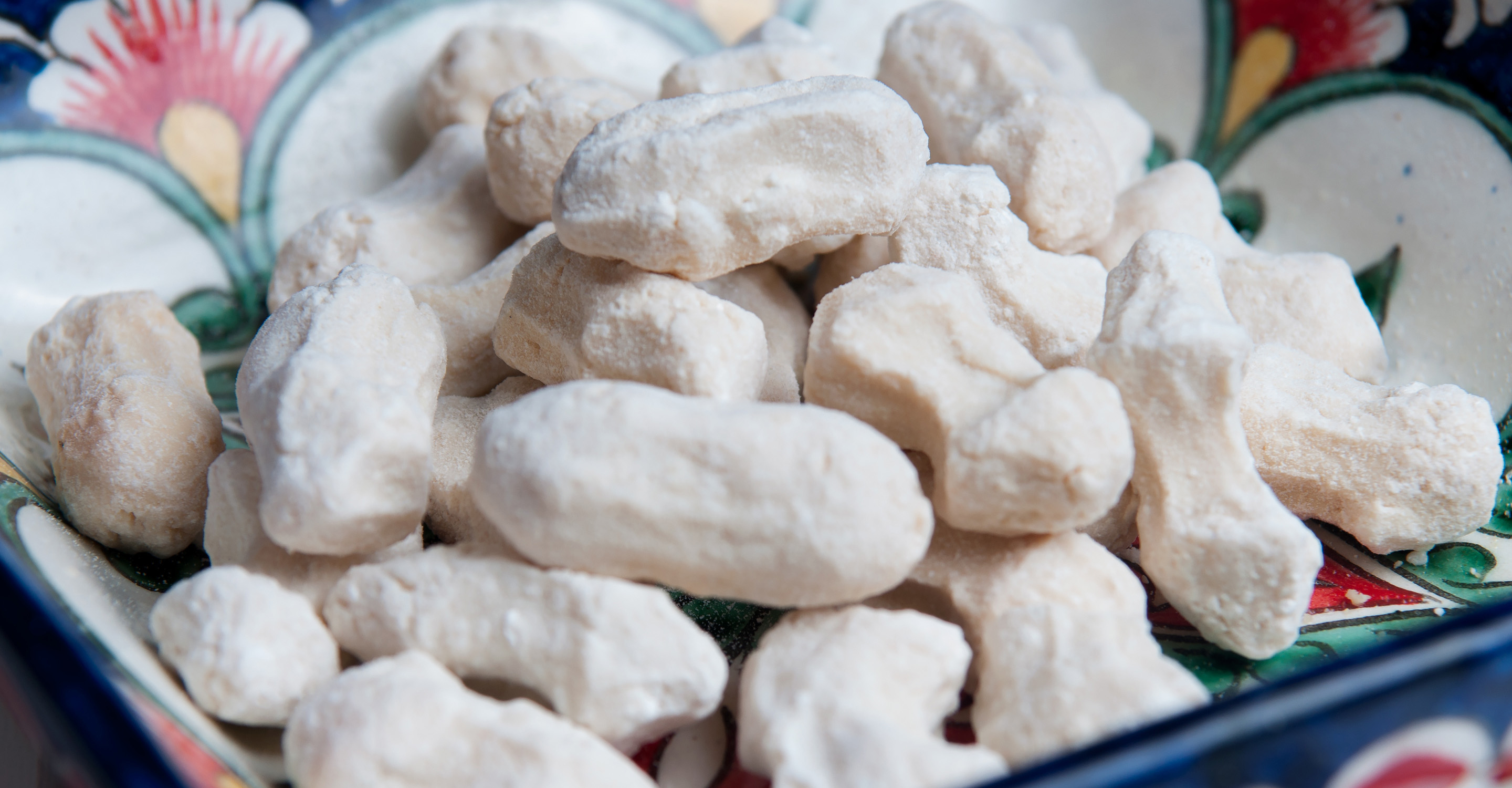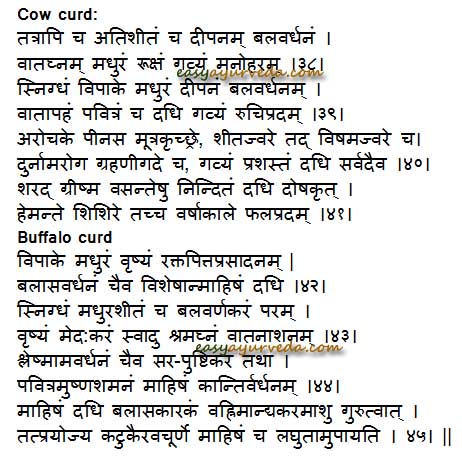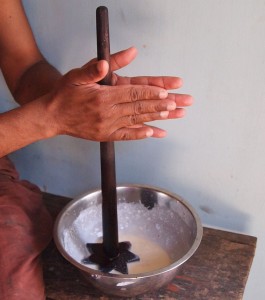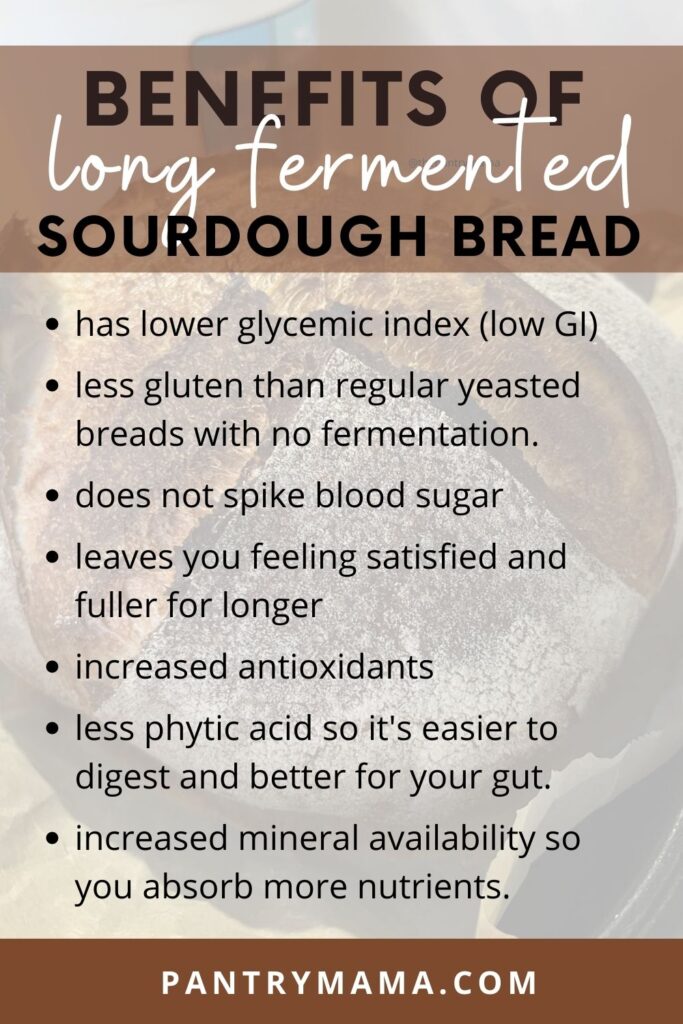Introduction
 Curd, a staple in many traditional diets around the world, has been cherished for centuries for its unique taste and numerous health benefits. Known as “dahi” in India, curd is essentially fermented milk, rich in probiotics that promote gut health and overall well-being. Historical records suggest that curd was an integral part of ancient Indian cuisine and medicine, revered for its cooling properties and nutritional value. From the Vedic texts to Ayurvedic practices, curd has been celebrated not just as a food, but as a remedy and a dietary cornerstone. Its preparation, consumption, and the wisdom surrounding its use have been passed down through generations, making it a timeless superfood that bridges the gap between tradition and modern nutrition.
Curd, a staple in many traditional diets around the world, has been cherished for centuries for its unique taste and numerous health benefits. Known as “dahi” in India, curd is essentially fermented milk, rich in probiotics that promote gut health and overall well-being. Historical records suggest that curd was an integral part of ancient Indian cuisine and medicine, revered for its cooling properties and nutritional value. From the Vedic texts to Ayurvedic practices, curd has been celebrated not just as a food, but as a remedy and a dietary cornerstone. Its preparation, consumption, and the wisdom surrounding its use have been passed down through generations, making it a timeless superfood that bridges the gap between tradition and modern nutrition.
Who is This For?
This article is intended for a diverse audience passionate about incorporating healthy and traditional foods into their daily diet. Health enthusiasts looking to enhance their digestive health through natural and cost effective probiotics will find valuable insights into the benefits of curd. Home cooks and Students eager to explore and prepare traditional dishes will appreciate the detailed explanations and practical tips provided for various curd-based recipes. This guide is also particularly beneficial for individuals with lactose intolerance, offering alternative ways to enjoy dairy through easily digestible curd preparations. Whether you are seeking to improve your gut health, expand your culinary repertoire, or simply enjoy the wholesome benefits of curd, this article provides comprehensive guidance and inspiration for making the most of this ancient probiotic food.
How Could the Readers Use This?
Readers can integrate high-quality curd into their daily diet to harness its numerous health benefits and culinary versatility. By understanding the probiotic richness of curd, which promotes gut health, aids digestion, and boosts immunity, readers can appreciate its nutritional value. Ensuring the consumption of top-quality curd involves looking for products with a smooth texture and minimal additives, sourced from artisanal stores or reputable brands, or by making it at home using fresh milk and a natural starter culture. True curd provides essential nutrients like calcium and protein and is beneficial for those with lactose intolerance. Incorporating curd into meals, such as curd rice, raita, smoothies, and marinades, enhances both flavor and health benefits. By thoughtfully adding curd to their diet, readers can improve their overall well-being, enjoy diverse culinary applications, and leverage its digestive and immune-boosting properties.
What is Curd?
Definition and Basic Explanation of Curd
 Curd, often referred to as “dahi” in South Asian countries, is a fermented dairy product created by curdling milk with a bacterial starter culture. The process involves adding a small amount of a previous batch of curd or a bacterial culture to warm milk and allowing it to ferment over several hours. This fermentation process transforms the milk into a thick, creamy substance that is rich in probiotics, which are beneficial bacteria that aid in digestion and promote gut health.
Curd, often referred to as “dahi” in South Asian countries, is a fermented dairy product created by curdling milk with a bacterial starter culture. The process involves adding a small amount of a previous batch of curd or a bacterial culture to warm milk and allowing it to ferment over several hours. This fermentation process transforms the milk into a thick, creamy substance that is rich in probiotics, which are beneficial bacteria that aid in digestion and promote gut health.
Difference Between Curd and Yogurt
While curd and yogurt are similar in many ways, they differ in terms of their preparation and bacterial cultures used:
Curd: Typically made using natural, unstandardized bacterial cultures found in the environment or from a previous batch of curd. The process is more traditional and can vary depending on the region and household practices. Curd is commonly used in Indian cuisine and has a slightly tangier flavor compared to yogurt.
Yogurt: Made using specific strains of bacteria, usually Lactobacillus bulgaricus and Streptococcus thermophilus. The production of yogurt is more standardized and controlled, resulting in a consistent product. Yogurt often has a smoother texture and can come in various flavors, whereas curd is usually plain.Greek Yogurt is a thicker version of yogurt as more whey is strained out of it.
Despite these differences, both curd and yogurt are excellent sources of probiotics and share similar health benefits, making them valuable additions to a balanced diet.
The Origins of Curd
Ancient Beginnings
The exact origins of curd are difficult to pinpoint, but it is widely believed that the practice of fermenting milk began in regions with pastoral cultures, such as the Indian subcontinent, the Middle East, and Central Asia. These communities relied heavily on livestock for their sustenance, and curd was an essential part of their diet. For Example- Iran preserved curd as dehydrated balls called ‘kashk’
In India, curd’s history is deeply intertwined with its cultural and religious practices. References to curd can be found in ancient Vedic texts dating back to 1500 BCE. The Rigveda, one of the oldest known scriptures, mentions the use of curd in various rituals and as a vital food source. In these texts, curd is praised for its cooling properties, making it particularly valuable in the hot climates of South Asia.
 Cultural Significance
Cultural Significance
Curd was not only a dietary staple but also held spiritual significance. It was often used in religious ceremonies and offerings to deities. The ancient practice of “Panchamrit,” a sacred mixture of five ingredients (milk, curd, honey, ghee, and sugar), exemplifies curd’s importance in Hindu rituals.
The process of making curd was traditionally a household skill passed down through generations. Each family had its unique methods and starter cultures, contributing to the diverse flavors and textures of curd found across different regions.
Evolution and Spread
 As civilizations grew and trade routes expanded, the knowledge and techniques of curd-making spread to other parts of the world. The Greeks and Romans, who valued fermented foods for their health benefits, adopted and adapted these methods. Over time, the practice of fermenting milk evolved into various forms, leading to the creation of different types of cultured dairy products, including yogurt and kefir.
As civilizations grew and trade routes expanded, the knowledge and techniques of curd-making spread to other parts of the world. The Greeks and Romans, who valued fermented foods for their health benefits, adopted and adapted these methods. Over time, the practice of fermenting milk evolved into various forms, leading to the creation of different types of cultured dairy products, including yogurt and kefir.
In medieval Europe, curd and other fermented dairy products were crucial for preserving milk before the advent of refrigeration. This practice ensured a steady supply of nutritious food throughout the year, particularly in harsh climates where fresh milk was not always available.For Example- Iran preserved curd as dehydrated balls called ‘kashk’
Modern-Day Relevance
 Today, curd remains a staple in many cuisines around the world. In India, it continues to be a dietary mainstay, used in a wide range of dishes from savory curries to refreshing drinks like lassi. Its probiotic benefits are now widely recognized by modern science, reaffirming the ancient wisdom of its health-promoting properties.
Today, curd remains a staple in many cuisines around the world. In India, it continues to be a dietary mainstay, used in a wide range of dishes from savory curries to refreshing drinks like lassi. Its probiotic benefits are now widely recognized by modern science, reaffirming the ancient wisdom of its health-promoting properties.
One such instance is consuming curd and jaggery, known as ‘dahi-shakkar,’ before important events such as exams or job interviews is a time-honored tradition rooted in both practical and symbolic reasons. Nutritionally, curd is rich in probiotics and provides a calming effect on the stomach, which can be particularly beneficial in reducing pre-event nervousness and anxiety. Jaggery, a natural sweetener, offers a quick energy boost due to its high carbohydrate content. Together, this combination ensures a balanced intake of protein, fat, and sugars, which helps maintain steady energy levels and mental alertness. Symbolically, dahi-shakkar is believed to bring good luck and positive outcomes. The ritual is often accompanied by blessings from elders, adding a layer of emotional support and confidence. This practice, blending health benefits with cultural significance, continues to be cherished across generations.
Insights from Ancient India: Pakadarpanam
Health Benefits of Curd as Noted in Ancient Indian Texts
 Curd, or “dahi,” has been celebrated in ancient Indian texts for its myriad health benefits. The wisdom of these texts, especially Ayurveda, highlights curd’s role in promoting overall health and well-being. One of the key ancient texts, Pakadarpanam, elaborates on the therapeutic properties of curd.
Curd, or “dahi,” has been celebrated in ancient Indian texts for its myriad health benefits. The wisdom of these texts, especially Ayurveda, highlights curd’s role in promoting overall health and well-being. One of the key ancient texts, Pakadarpanam, elaborates on the therapeutic properties of curd.
Digestive Aid: Curd is highly regarded for its probiotic content, which aids in digestion and helps maintain a healthy gut flora. Ancient texts note that curd stimulates the digestive fire (agni) and helps in the proper assimilation of nutrients.
Strength and Immunity: Curd is considered a strength-giving food, known to boost immunity. It is rich in vitamins, minerals, and proteins, which contribute to overall physical strength and vitality.
Skin Health: The ancient texts also mention the benefits of curd for skin health. It is said to improve complexion and maintain the skin’s natural moisture, making it a common ingredient in traditional beauty treatments.
Cooling Effect: Curd has a cooling effect on the body, which is particularly beneficial in hot climates. It helps to balance the body’s heat and reduce symptoms of heat-related discomfort.
Balancing Doshas: In Ayurveda, curd is considered beneficial for balancing the doshas, particularly Vata and Pitta. However, it is noted that curd can aggravate Kapha if consumed improperly.
Ayurvedic Recommendations for Consuming Curd
Ayurveda, the ancient system of medicine in India, provides detailed guidelines on how to consume curd for maximum health benefits:
Moderation is Key: Curd should be consumed in moderation. Excessive consumption can lead to an imbalance of the Kapha dosha, causing issues like congestion or weight gain.
Proper Timing: It is recommended to consume curd during the daytime, preferably at lunch. Eating curd at night can lead to digestive problems and mucus buildup.
Combining with Other Foods: To enhance its benefits, curd is often combined with other foods. For instance:
- Curd and Honey: Mixing curd with honey balances its cooling properties and adds a soothing effect.
- Curd and Rock Salt: Adding a pinch of rock salt to curd can enhance digestion and taste.
- Curd and Spices: Incorporating spices like cumin, black pepper, and ginger can improve digestion and reduce the potential Kapha aggravating properties of curd.
- Curd and Chuna (Quicklime): Boosts calcium absorption in the body
Avoid Heating: Curd should never be heated or cooked as it can lose its beneficial properties and become heavy to digest.
True Curd Preparation: For the best results, Ayurveda emphasizes the importance of preparing curd traditionally at home using natural starters and earthen pots. This method ensures the curd retains its probiotic richness and health benefits.
Seasonal and Indivudual Considerations: Curd consumption should be adjusted according to the season and a persons nature. It is highly beneficial in the summer due to its cooling effect but should be limited in the winter and rainy seasons to avoid Kapha-related issues.
True Curd vs. Industrialized Curd
Characteristics of True Curd
True curd, often referred to as traditional or homemade curd, is a product of natural fermentation processes that have been used for centuries.True curd is made by fermenting milk using a natural bacterial starter culture, often sourced from a previous batch of curd. This results in a diverse microbial population, which contributes to its rich probiotic content. The preparation of true curd typically involves traditional methods, such as setting the curd in an earthen pot. This not only enhances the flavor but also helps maintain an optimal temperature for fermentation. True curd tends to have a slightly grainy texture and a tangy taste, which can vary depending on the starter culture and fermentation time. There is minimal intervention in the process of making true curd. It does not contain added preservatives, stabilizers, or artificial ingredients.
 Differences Between Traditional and Mass-Produced Curd
Differences Between Traditional and Mass-Produced Curd
Starter Culture:
- True Curd: Uses natural, often homemade starter cultures with a diverse range of beneficial bacteria i.e probiotics.
- Mass-Produced Curd: Uses standardized industrial bacterial strains, often limited to a few specific types like Lactobacillus bulgaricus and Streptococcus thermophilus. Which may also explain why Mass Produced Curds don’t act well as a curd starter.
Ingredients:
- True Curd: Typically made with whole milk and a small amount of starter culture.
- Mass-Produced Curd: Often made with pasteurized milk, contains added preservatives, thickeners, stabilizers, and sometimes additional flavors or sweeteners.
Fermentation Process:
- True Curd: Fermented slowly at room temperature or in a warm environment, usually in earthenware pots.
- Mass-Produced Curd: Fermented in controlled industrial environments, often at higher temperatures to speed up the process.
Probiotic Content:
- True Curd: Rich in a variety of probiotics due to the natural fermentation process.
- Mass-Produced Curd: May have fewer probiotic strains and lower overall probiotic content due to the standardized process.
Flavor and Texture:
- True Curd: Has a unique, tangy flavor and a slightly grainy texture.
- Mass-Produced Curd: Generally has a smoother texture and a more uniform taste, which can be less tangy due to controlled fermentation.
Reasons Why True Curd is Rarer in Urban Areas
Urban lifestyles often demand convenience, leading consumers to opt for readily available mass-produced curd from supermarkets rather than making it at home. The traditional process of making curd requires time and patience, which many urban dwellers find challenging due to their busy schedules. True curd often requires specific tools and ingredients, such as earthen pots and natural starter cultures, which may not be easily accessible in urban settings. Many people in urban areas might not be aware of the traditional methods of making curd or the benefits associated with true curd. Large-scale dairy companies dominate the market, making mass-produced curd more prevalent and overshadowing traditional practices. Mass-produced curd is designed for a longer shelf life, making it more practical for urban consumers who may prefer buying in bulk or storing products for longer periods. Industrially produced curd is often marketed more aggressively, leading to a perception that it is superior or more convenient than homemade alternatives.
Lactose Intolerance and True Curd
Explanation of Why True Curd is Often Digestible for Those with Lactose Intolerance
 Lactose intolerance is a common condition where individuals lack sufficient levels of lactase, the enzyme needed to digest lactose, a sugar found in milk and dairy products. This deficiency can lead to symptoms such as bloating, gas, and diarrhea after consuming dairy. However, true curd often proves to be an exception and is digestible for many people with lactose intolerance. Here’s why:
Lactose intolerance is a common condition where individuals lack sufficient levels of lactase, the enzyme needed to digest lactose, a sugar found in milk and dairy products. This deficiency can lead to symptoms such as bloating, gas, and diarrhea after consuming dairy. However, true curd often proves to be an exception and is digestible for many people with lactose intolerance. Here’s why:
Fermentation Reduces Lactose Content:
- During the fermentation process that produces curd, lactose in the milk is broken down by the bacteria used as the starter culture. These bacteria, such as Lactobacillus and Streptococcus, consume lactose and convert it into lactic acid.
- As a result, the lactose content in curd is significantly reduced compared to fresh milk, making it easier to digest for those with lactose intolerance.
Presence of Lactase-Producing Bacteria:
- The bacterial cultures used in making true curd not only reduce lactose levels but also produce lactase, the enzyme required to digest lactose.
- When consumed, these bacteria continue to aid in the digestion of any remaining lactose in the digestive tract, further alleviating symptoms of lactose intolerance.
Enhanced Digestive Enzyme Activity:
- The probiotics found in true curd can help improve the overall health of the gut microbiome. A balanced gut flora enhances the digestive system’s efficiency, including the breakdown of lactose.
- Regular consumption of probiotic-rich foods like true curd can gradually improve the body’s ability to handle lactose over time.
Natural Fermentation Process:
- True curd is typically made using natural fermentation methods that involve a slow and thorough fermentation process. This traditional approach allows for a more complete breakdown of lactose compared to the faster, industrial methods used in mass production.
- The use of natural, diverse bacterial cultures in true curd also contributes to its higher probiotic content, which supports better digestion.
Less Processing and Additives:
- True curd is minimally processed and does not contain additives or preservatives that can sometimes exacerbate digestive issues.
- The simplicity and purity of true curd help maintain its natural probiotic and enzyme benefits, making it a more digestible option for those with lactose intolerance.
Example: An individual with lactose intolerance finds that consuming a glass of milk leads to discomfort and bloating. However, when they eat a serving of true curd made at home using traditional methods, they experience no such symptoms. This is because the fermentation process has significantly reduced the lactose content and the probiotics in the curd help in digesting any remaining lactose.
Making True Curd at Home
Step-by-Step Guide to Making Curd at Home
Making curd at home is a simple and rewarding process. Here’s a detailed guide to help you create true curd using traditional methods.
Ingredients:
- Fresh milk (cow, buffalo, goat, or other preferred milk)
- A starter culture (from a previous batch of curd from a friend or neighbour or a natural homemade starter, packaged curds often don’t work well as starters)
- An earthen pot (optional but recommended)
 Creating a Starter from Scratch: If you don’t have a previous batch of curd to use as a starter, you can create one using natural ingredients:
Creating a Starter from Scratch: If you don’t have a previous batch of curd to use as a starter, you can create one using natural ingredients:
Green Chili Method:
- Take 1-2 fresh green chilies with the stems intact. The stems are a non dairy source of lactic acid. Alternatively the stems as may used without the chilli.
- Wash them thoroughly and place them in a small bowl of lukewarm milk.
- Cover and let it sit in a warm place for 8-12 hours. The natural bacteria on the chili stem will ferment the milk and create a starter.
Red Chili Method:
- Follow the same steps as with green chili but use fresh red chilies with stems.
- This method may take slightly longer but is equally effective.
Lemon Method:
- Squeeze the juice of one lemon into lukewarm milk and stir well.
- Cover and leave it in a warm place for 8-12 hours until it curdles and thickens.
Silver Coin Method:
- Place a clean silver coin in a bowl of lukewarm milk.
- Cover and leave it in a warm place for 8-12 hours. Silver has antimicrobial properties that can help in fermentation.
Once you have your starter ready, follow these steps to make curd:
Step-by-Step Process:
Boil the Milk:
- Start by boiling fresh milk (preferably in an iron vessel) to kill any harmful bacteria. Allow it to cool down until it is lukewarm (about 110°F or 43°C). This is the ideal temperature for fermentation.
 Prepare the Earthen Pot:
Prepare the Earthen Pot:- If using an earthen pot, rinse it with water to ensure it is clean. The porous nature of earthen pots allows for slow evaporation, maintaining the right temperature for fermentation and enhancing the flavor.
Add the Starter:
- Add 1-2 tablespoons of your starter culture to the lukewarm milk. Stir gently to mix the starter evenly throughout the milk.
Fermentation:
- Cover the pot with a lid or a clean cloth and place it in a warm, undisturbed area. Ideal temperatures for fermentation are between 75°F and 85°F (24°C to 29°C).
- Allow the milk to ferment for 6-8 hours or overnight. The fermentation time can vary based on the ambient temperature. In cooler climates, it may take longer.
Check the Curd:
- After the fermentation period, check the curd. It should be set and have a slightly tangy smell. If it is still runny, give it more time to ferment.
Refrigerate:
- Once the curd is set, transfer it to the refrigerator to slow down the fermentation process and to firm up the texture. Refrigerate for at least 1-2 hours before consuming.
Tips and Tricks:
- Consistent Temperature: Maintaining a consistent warm temperature is crucial. You can use an oven with the light on, a casserole, a closed pressure cooker with war water or even a towel on top of the vessel to provide a stable environment which may also set the curd quicker.
- Avoid Disturbance: Do not disturb the pot during the fermentation process, as movement can prevent the curd from setting properly.
- Use Fresh Milk: Always use fresh, good-quality milk for the best results. Whole milk yields a creamier curd, while low-fat milk produces a lighter texture.
- Clean Equipment: Ensure all equipment used (pots, spoons, etc.) is clean to avoid contamination.
- Seasonal Adjustments: In colder months,wrap the pot in a warm cloth or place it in a warm spot to ensure proper fermentation.
Making true curd at home using traditional methods not only ensures a rich, probiotic-filled product but also connects you to ancient culinary practices. By following these steps and tips, you can enjoy delicious, homemade curd that is both nutritious and flavorful. Embrace the tradition and savor the benefits of this ancient superfood.
Selecting Quality Curd
Tips for Choosing the Best Curd if Making it at Home is Not Feasible
If making curd at home isn’t an option, selecting the best quality curd from stores or online can ensure you still enjoy the nutritional and probiotic benefits. Here are some tips to help you choose the best curd:
Check the Ingredients:
- Look for curd with minimal ingredients: ideally just milk and live cultures. Avoid products with added sugars, artificial flavors, preservatives, and stabilizers.
Look for Live Cultures:
- Ensure the curd contains live and active cultures. This information is usually listed on the packaging. Live cultures indicate the presence of beneficial probiotics.
Examine the Expiry Date:
- Choose curd that is as fresh as possible. Check the expiration date and select a product with the longest shelf life remaining to ensure maximum freshness and probiotic activity.
Observe the Texture and Consistency:
- Quality curd should have a smooth, creamy texture. Avoid products that appear watery or have a grainy texture, as these may indicate inferior quality or improper storage.
Assess the Packaging:
- Opt for curd sold in packaging that ensures minimal exposure to light and air, such as opaque containers or sealed packs. This helps preserve the probiotic content and overall quality.
Consider Organic Options:
- Organic curd is often free from synthetic pesticides, hormones, and antibiotics, making it a healthier choice. Organic products typically have stricter quality control measures.
Research the Brand:
- Choose reputable brands known for their quality dairy products. Reading reviews and doing a quick online search can provide insights into the brand’s reliability and product quality.
Taste Test:
- If possible, sample different brands to find one that suits your taste preferences. Quality curd should have a pleasant tangy flavor without any off-tastes.
Should I Buy Loose Curd in Packets or Set Curd in Tubs? What’s the Difference?
When purchasing curd, you might come across different packaging options, primarily loose curd in packets and set curd in tubs. Here’s what you need to know:
Loose Curd in Packets:
- Portion Size: Packets usually come in smaller portions, which can be convenient for single servings or for those who consume curd infrequently.
- Storage and Freshness: Once opened, loose curd in packets should be consumed quickly as it can spoil faster due to its exposure to air.
- Convenience: Packets are easy to carry and can be a good option for packed lunches or travel.
- Consistency: Loose curd tends to have a more fluid consistency, making it suitable for mixing into dishes or using in recipes.
Set Curd in Tubs:
- Portion Size: Tubs generally come in larger portions, making them ideal for families or regular consumers of curd.
- Storage and Freshness: Set curd in tubs often comes with resealable lids, helping to maintain freshness over multiple uses.
- Economic Value: Buying in larger quantities can be more cost-effective, reducing the per-unit cost compared to smaller packets.
- Consistency: Set curd has a thicker, firmer texture that holds its shape, which some people prefer for direct consumption.
Recommended Sources:
Sweet Shops and Local Dairies:
- Traditional sweet shops and local Dairies often make curd using age-old methods, providing a product that is close to homemade. Look for sweet shops that are known for their dairy products.
Artisanal Stores:
- Artisanal stores specialize in small-batch, high-quality dairy products. These stores often prioritize traditional methods and high-quality ingredients, ensuring a superior product.
- Visit local farmers’ markets or specialty food stores that focus on artisanal and organic products.
 Online Options:
Online Options:- Numerous online retailers offer high-quality curd including (A2 curd, Organic curd, Bilona ghee and butter made from semi automatic Bilona machines with different kinds of wood for different heath benefits etc.) Look for brands that emphasize natural ingredients and live cultures. Some popular options include:
- Farm-to-Table Services: Websites that deliver fresh dairy products directly from farms.
- Specialty Online Grocers: Stores that focus on organic and artisanal products, often with a wide selection of dairy items.
- Subscription Services: Some companies offer subscription boxes that include a variety of artisanal dairy products, including curd.
- Numerous online retailers offer high-quality curd including (A2 curd, Organic curd, Bilona ghee and butter made from semi automatic Bilona machines with different kinds of wood for different heath benefits etc.) Look for brands that emphasize natural ingredients and live cultures. Some popular options include:
Selecting quality curd, whether from a store or online, involves paying attention to ingredients, freshness, and the presence of live cultures. By choosing reputable sources like sweet shops, artisanal stores, and trusted online retailers, you can enjoy the benefits of true, high-quality curd even when making it at home isn’t feasible. Additionally, consider whether loose curd in packets or set curd in tubs best fits your needs based on portion size, storage, and convenience. Enjoy exploring the diverse flavors and textures of this ancient probiotic food and make it a regular part of your diet for its numerous health benefits.
The Churning Process and Its Scientific Health Benefits
Churning curd is a traditional practice that not only transforms its texture but also enhances its nutritional value and digestibility. This process involves breaking down the molecular structure of curd, leading to a range of dairy products that are easier for the body to digest and absorb.
Why is Curd Churned?
 The traditional Indian process of churning curd to make ghee, known as ‘bilona,’ involves a meticulous and age-old method. This process starts with setting curd from raw, unpasteurized milk in earthen pots. Once the curd is well-set, it is churned using a wooden churner, called a ‘bilona,’ in a rhythmic motion to separate the butterfat from the buttermilk. This butterfat is then boiled to produce pure ghee. Consuming curd and ghee made through the bilona method ensures higher nutrient retention, including essential fatty acids, vitamins, and probiotics. Moreover, the women who traditionally performed this churning benefited significantly from the physical activity involved. The consistent, repetitive motion required to churn the curd strengthened their core and pelvic floor muscles, promoting hormonal balance and overall reproductive health. This traditional practice not only yielded nutritious products but also contributed to the physical well-being of the women involved.
The traditional Indian process of churning curd to make ghee, known as ‘bilona,’ involves a meticulous and age-old method. This process starts with setting curd from raw, unpasteurized milk in earthen pots. Once the curd is well-set, it is churned using a wooden churner, called a ‘bilona,’ in a rhythmic motion to separate the butterfat from the buttermilk. This butterfat is then boiled to produce pure ghee. Consuming curd and ghee made through the bilona method ensures higher nutrient retention, including essential fatty acids, vitamins, and probiotics. Moreover, the women who traditionally performed this churning benefited significantly from the physical activity involved. The consistent, repetitive motion required to churn the curd strengthened their core and pelvic floor muscles, promoting hormonal balance and overall reproductive health. This traditional practice not only yielded nutritious products but also contributed to the physical well-being of the women involved. The primary scientific benefit of churning curd lies in its impact on molecular structure. Churning disrupts the proteins and fats within the curd, making them more accessible for digestion. This is particularly advantageous for individuals who struggle with digesting whole milk products. The process of churning leads to the formation of smaller fat globules and pre-digested proteins, which the intestines can process and assimilate more efficiently. This enhanced digestibility ensures that the body can absorb more nutrients from the curd.
The primary scientific benefit of churning curd lies in its impact on molecular structure. Churning disrupts the proteins and fats within the curd, making them more accessible for digestion. This is particularly advantageous for individuals who struggle with digesting whole milk products. The process of churning leads to the formation of smaller fat globules and pre-digested proteins, which the intestines can process and assimilate more efficiently. This enhanced digestibility ensures that the body can absorb more nutrients from the curd.
Different Stages of Churning and Their Products
In the early stage of churning, curd is lightly mixed with water to create lassi. This smooth, liquid beverage is rich in probiotics, which are beneficial bacteria that support gut health. Probiotics play a crucial role in maintaining a healthy balance of gut flora, aiding digestion, and boosting the immune system. Lassi’s hydrating properties and refreshing taste make it an excellent choice for improving digestive health. At this stage the Curd has a Shelf life of 3 to 4 days.
 As the churning process continues, butter is produced. During this intermediate stage, the butterfat separates from the buttermilk. Butter is a semi-solid, creamy product that is high in healthy fats and fat-soluble vitamins such as A, D, E, and K. These vitamins are essential for various bodily functions, including maintaining healthy skin, vision, and immune response. The fats in butter provide a concentrated source of energy and support cellular health. Shelf life of well drained Butter is 5 to 7 days
As the churning process continues, butter is produced. During this intermediate stage, the butterfat separates from the buttermilk. Butter is a semi-solid, creamy product that is high in healthy fats and fat-soluble vitamins such as A, D, E, and K. These vitamins are essential for various bodily functions, including maintaining healthy skin, vision, and immune response. The fats in butter provide a concentrated source of energy and support cellular health. Shelf life of well drained Butter is 5 to 7 days
In the final stage of churning, butter is further processed to create ghee by heating it to remove water content. Ghee is a clear, golden fat that is free from lactose, making it suitable for individuals with lactose intolerance. Ghee is rich in antioxidants and has a high smoke point, making it stable for cooking at high temperatures without breaking down into harmful compounds. Additionally, ghee contains butyrate, a short-chain fatty acid that supports gut health by nourishing the cells lining the intestines. Shelf life of Ghee when stored properly could be thousands of years.
Benefits of Cultured Milk Products Versus Direct Milk Fat Products
Cultured milk products like curd, lassi, and buttermilk offer significant health benefits due to their probiotic content. These live cultures promote a healthy digestive system by fostering beneficial bacteria in the gut. They also aid in the digestion of lactose, which is beneficial for those who are lactose intolerant. The fermentation process used to create these cultured products pre-digests the proteins and fats, enhancing their digestibility and nutrient absorption.
How to Consume Curd to Heal Ailments
Curd, with its probiotic properties and rich nutrient profile, can be a powerful ally in managing and healing various ailments. Here are some ways to consume curd specifically for its healing benefits:
1.  Digestive Issues
Digestive Issues
- Churned curd and water: Churn curd well with lots of water to create a thin and even consistency. Add spices like cumin powder, asafoetida, coriander, and carom seeds. This drink helps soothe the stomach, aids digestion, and reduces bloating and gas.
- Curd and Ginger: Mix grated ginger into a cup of curd. Ginger is known for its digestive properties and can help relieve nausea and improve digestion.
- Curd with Mint: Blend curd with fresh mint leaves to create a cooling drink. Mint helps in relieving indigestion and stomach discomfort.
2. Boosting Immunity
- Curd and Turmeric: Add a pinch of turmeric to a bowl of curd. Turmeric has anti-inflammatory and antioxidant properties that can help boost your immune system.
- Honey and Curd: Mix a tablespoon of honey into a cup of curd. Honey has antimicrobial properties and can enhance the immune-boosting effects of curd.
3. Weight Management
- Curd with Flaxseeds: Add a tablespoon of ground flaxseeds to curd. Flaxseeds are rich in fiber and omega-3 fatty acids, which can help with weight management by promoting a feeling of fullness.
- Curd and Oats: Combine curd with oats for a filling breakfast. This high-fiber meal can help manage weight and improve digestion.
4. Skin Health
- Curd and Aloe Vera: Mix aloe vera gel with curd and consume. Aloe vera is known for its skin-healing properties and can help maintain healthy, glowing skin.
- Curd and Honey Mask: Apply a mixture of curd and honey directly to the skin as a face mask. This can help soothe irritated skin and provide a natural glow.
5.  Bone Health
Bone Health
- Curd with Sesame Seeds: Mix a tablespoon of roasted sesame seeds into curd. Sesame seeds are high in calcium and, combined with the calcium in curd, can help strengthen bones.
- Curd with Ragi Malt (Ragi Ambli): Sprouted ragi flour is boiled with water and mixed with churned curd to create a nutrition bons strengthening drink
- Curd with Quicklime: ‘Chuna’ available at pan shops boosts calcium.
- Curd and Spinach Smoothie: Blend curd with spinach and a banana. Spinach is rich in calcium and vitamin K, which are essential for bone health.
6. Cold and Flu Relief
- Curd with Black Pepper and Honey: Add a pinch of black pepper and a tablespoon of honey to curd. Black pepper has anti-inflammatory properties and can help relieve symptoms of cold and flu.
- Warm Curd Drink: Slightly warm a cup of curd and add a pinch of black salt and cumin powder. This can help soothe a sore throat and clear nasal congestion.
7. Managing Blood Pressure
- Curd with Garlic: Crush a clove of garlic and mix it into a cup of curd. Garlic is known to help lower blood pressure and improve heart health.
- Curd and Cucumber Salad: Combine curd with chopped cucumbers, which are hydrating and help regulate blood pressure.
8. Managing Diabetes
- Curd and Fenugreek Seeds: Soak a tablespoon of fenugreek seeds overnight, strain, and mix the seeds with curd in the morning. Fenugreek helps regulate blood sugar levels.
- Curd with Bitter Gourd Juice: Mix a few tablespoons of bitter gourd juice into curd. Bitter gourd has blood-sugar-lowering properties that can help manage diabetes.
Curd can be consumed in various ways to address and heal different ailments, thanks to its rich probiotic content and versatile nature. From digestive health to immune support, weight management, and skin care, incorporating curd into your diet with specific ingredients can enhance its healing properties. Experiment with these combinations to harness the full health benefits of curd in your daily routine.
Evaluating Common Ways of Consuming Curd and Recommending Best Practices for Maximum Health Benefits
Curd is a versatile dairy product rich in probiotics and essential nutrients, making it a valuable addition to various dishes. Each method of consuming curd offers unique benefits, primarily focused on enhancing digestion, flavor, and overall health. Here’s an evaluation of common ways to consume curd and recommendations for reaping the maximum health benefits.
 Curd Rice
Curd Rice
Curd rice is a classic South Indian dish where curd is mixed with cooked rice, often seasoned with spices like mustard seeds and curry leaves.
- Health Benefits: The probiotics in curd promote a healthy gut by maintaining a balance of beneficial bacteria. Curd rice is also cooling and soothing to the stomach, making it ideal for digestion.
- Best Practices: Use fresh, thick curd and cooked, cooled rice. Adding a bit of salt and tempering with mustard seeds, curry leaves, and a pinch of asafoetida can enhance both flavor and digestion. Consider incorporating finely chopped cucumbers or grated carrots for added fiber and vitamins.
 Sweet/Flavored Curd (e.g., Mango Srikhand, Strawberry Lassi)
Sweet/Flavored Curd (e.g., Mango Srikhand, Strawberry Lassi)
Sweet and flavored curds are popular desserts or snacks, combining curd with fruits, sugar, or flavorings.
- Health Benefits: While these variations are more for taste, they still provide some probiotics and vitamins from the fruits.
- Best Practices: Use natural sweeteners like honey or jaggery instead of refined sugar. Opt for fresh, organic fruits to maximize the nutritional benefits. Consume these as occasional treats rather than daily staples to keep sugar intake in check.
 Curd in Naturally Fermented Dough (e.g., Bhatura, Thepla, Jalebi)
Curd in Naturally Fermented Dough (e.g., Bhatura, Thepla, Jalebi)
Curd is often used in the fermentation of dough for various breads and fried snacks.
- Health Benefits: Naturally fermented dough can improve digestibility and nutrient absorption due to the presence of beneficial bacteria from the curd.
- Best Practices: Use whole wheat or multigrain flour to increase fiber and nutrient content. Allow the dough to ferment adequately to maximize probiotic benefits. Moderation is key, especially with fried items like bhatura and jalebi.
Curd in Marination (e.g., Biryani, Paneer Tikka)
Curd is commonly used in marinades to tenderize and flavor meats and vegetables.
- Health Benefits: The primary benefit here is enhanced flavor and texture. Curd helps break down proteins, making the marinated food easier to digest.
- Best Practices: Use thick, fresh curd for marination. Add spices such as turmeric, cumin, and coriander for additional health benefits and flavor. Ensure to marinate for sufficient time to allow flavors to meld and proteins to break down.
 Curd with Baking Soda in Instant Fluffy Dishes (e.g., Pancakes, Dhokla, Rava Idli)
Curd with Baking Soda in Instant Fluffy Dishes (e.g., Pancakes, Dhokla, Rava Idli)
Combining curd with baking soda is a common practice to make fluffy, instant dishes.
- Health Benefits: The chemical reaction between curd and baking soda creates carbon dioxide, making the dish light and airy, though primarily for taste rather than health.
- Best Practices: Use minimal baking soda to avoid a bitter taste. Ensure the curd is fresh and active to maximize its probiotic benefits. These dishes should be enjoyed in moderation as part of a balanced diet.
Curd with Sattu in Gravies
Curd can be mixed with sattu (roasted gram flour) to create rich, flavorful gravies.
- Health Benefits: This combination is primarily for taste. While sattu is high in protein and fiber, the combination with curd should be enjoyed occasionally.
- Best Practices: Use this combination sparingly. Opt for other healthier curd-based dishes more frequently to balance your diet.
 Curd in Vegetable Raita or Other Salad Dressings
Curd in Vegetable Raita or Other Salad Dressings
Curd-based raitas and salad dressings are excellent for enhancing meals with a refreshing, nutritious touch.
- Health Benefits: Raita and salad dressings provide probiotics, vitamins, and minerals. The added vegetables increase fiber intake and provide additional nutrients.
- Best Practices: Use low-fat or homemade curd to keep the dish healthy. Add a variety of fresh vegetables like cucumbers, tomatoes, and carrots. Season with spices such as cumin, mint, and coriander to boost flavor and digestive benefits.
Ganji AnnamA cherished dish in South Indian cuisine, offers not only culinary delight but also a plethora of health benefits. This fermented rice porridge has been a staple for generations, cherished for its comforting taste and nourishing properties.
- Health Benefits: Rich in probiotics due to the fermentation process, Ganji Annam promotes gut health and aids digestion. The fermentation of whole-grain rice enhances its nutritional profile, making it a source of fiber, vitamins, and minerals. Regular consumption of Ganji Annam supports a healthy gut microbiome, strengthens the immune system, and provides sustained energy throughout the day.
- Best Practices: For maximum health benefits, allow the rice to ferment overnight to increase its probiotic content and digestibility. Enjoy as a wholesome breakfast or a light meal, paired with fresh vegetables, mashed potatoes or pickles for added flavor and nutrients.
Conclusion
Curd is a remarkable food with a rich history and a multitude of health benefits. From aiding digestion to boosting immunity and enhancing nutrient absorption, this ancient probiotic offers a versatile and delicious way to support your overall well-being. Whether you enjoy it as a refreshing buttermilk, a component in traditional dishes, or a simple accompaniment to meals, curd can be a valuable addition to your daily diet.
We encourage you to explore the various ways to incorporate curd into your meals and experience its benefits firsthand. Experiment with the recipes and tips provided, and feel free to adapt them to your preferences and dietary needs. We would love to hear about your experiences with curd! Please share your stories, recipes, and feedback with us. Your insights can inspire others to embrace this nutritious food and explore its potential in their own lives.
By supporting the Meda Foundation, you help us continue our mission of empowering communities worldwide through sustainable development initiatives. Your donations contribute to providing access to education, healthcare, and economic opportunities, and promoting environmental sustainability. Together, we can create a world where every individual has the opportunity to thrive.
Sources
Harvard T.H. Chan School of Public Health – Probiotics: https://www.hsph.harvard.edu/nutritionsource/probiotics/
- This source provides detailed information on the health benefits of probiotics, including their role in digestion and immune health.
Mayo Clinic – Yogurt: https://www.mayoclinic.org/healthy-lifestyle/nutrition-and-healthy-eating/expert-answers/yogurt/faq-20058446
- This source discusses the nutritional benefits of yogurt, emphasizing its probiotic content and digestibility.
National Center for Biotechnology Information (NCBI) – Health Benefits of Fermented Foods: https://www.ncbi.nlm.nih.gov/pmc/articles/PMC6723652/
- This scientific paper explains the health benefits of fermented foods, including both curd and pickles, highlighting their probiotic properties.
Journal of the Academy of Nutrition and Dietetics – The Effects of Probiotics on Digestion: https://www.jandonline.org/article/S2212-2672(19)30139-7/fulltext
- This journal article reviews the digestive benefits of probiotics, supporting the role of curd in promoting gut health.
Healthline – The Health Benefits of Pickles: https://www.healthline.com/nutrition/are-pickles-good-for-you
- This source provides a comprehensive overview of the nutritional and health benefits of pickles, including their probiotic content.
Ayurveda Research and Studies – Digestive Benefits of Spices in Pickles: https://www.ayurtimes.com/digestive-benefits-of-indian-spices/
- This article explains the digestive benefits of spices commonly used in pickles, such as cumin, coriander, and carom seeds.
WebMD – Probiotic Foods and Digestive Health: https://www.webmd.com/digestive-disorders/probiotics
- This source discusses the various probiotic foods and their benefits for digestive health, including curd and fermented pickles.
Indian Journal of Traditional Knowledge – Traditional Fermentation and Probiotic Foods: https://www.researchgate.net/publication/282662546_Traditional_Fermentation_and_Probiotic_Foods_of_India
- This research paper explores traditional fermentation methods and the health benefits of probiotic foods in Indian cuisine, such as curd and pickles.

 Prepare the Earthen Pot:
Prepare the Earthen Pot: Online Options:
Online Options:







